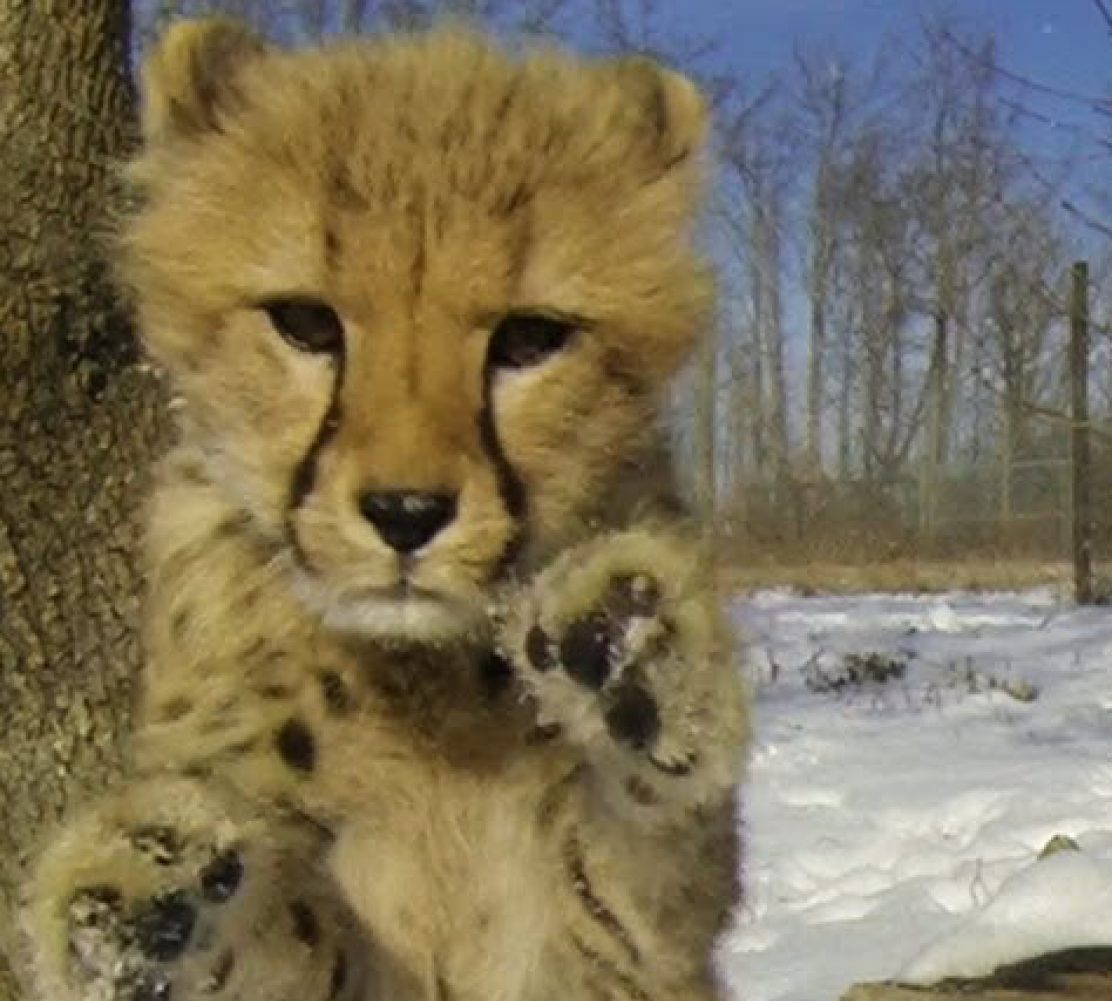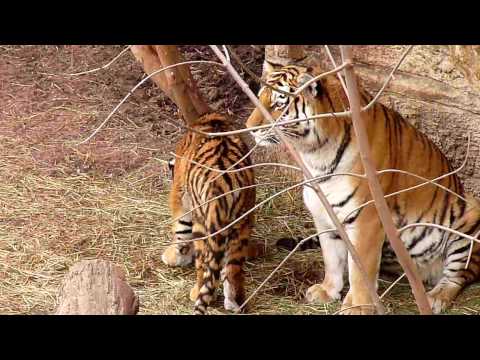St Louis Zoo Webcams
Accredited by the Association of Zoos and Aquariums and recognized as a pioneer in animal management, conservation, education, and research, The Saint Louis Zoological Park, often referred to as the St. Louis Zoo, is located in Forest Park, St. Louis.
General admission to the St Louis Zoo is free and based on subsidy from a cultural tax district, the Metropolitan Zoological Park and Museum District.
Fees however are charged for some special attractions. One of the zoo’s special features is an Emerson Zooline Railroad offering a 20-minute narrated tour encircling the zoo.
Following the St. Louis World’s Fair in 1904 the city acquired its first exhibit, a walk-through Flight Cage constructed by the Smithsonian Institution. After the zoo was founded, new building and exhibits were added to improve care of the animals, increase the collection of animals as well as for interpretation and educational purposes.
Interesting Facts About St Louis Zoo
• Credited for the founding of the St. Louis Zoo, the 1904 St. Louis World’s Fair gave rise to global recognition of the St. Louis and Forest Park. Ten days later after the closing of the World’s Fair locals decided to buy the walk-through Fair Flight Cage for the sum of $3,500, rather than have it disassembled and returned to Washington, D.C. This decision marked the first token of what would later give rise to the St. Louis Zoo.
• By 1910, growing interest in a zoological park brought together a group of concerned locals to form the Zoological Society of St. Louis. In 1914, the society was embodied as an independent municipal organization of persons interested in a zoo. Suggestions for sites to be used for the zoo which came as, letters to civic groups and editors and by way of newspaper articles included the Creve Coeur area, Fairgrounds Park and Tower Grove Park. Several of the residents in neighboring Oakland Avenue just south of Forest Park expressed their disapproval citing concerns over the potential smell of the animals.
• Expansion of the zoo began in 1921 with the construction of the Bear Pits. Later developments included the building of the Primate House in 1923 and the construction of the Reptile House four years later.
• In 1930 the zoo built its new Bird House. With the onset of the Great Depression and loss of revenue construction of new exhibits slowed. With the help of the Civil Works Administration a program implemented by the then President Franklin D. Roosevelt the zoo constructed its Antelope House in 1935. In 1939 this This flare of construction came to an end with the construction of the zoo’s Ape House. In 1939 the zoo added two giant pandas Happy and Pao Pei to its collection of animals. In 1945 Happy died followed by Pao Pei nine years later.
• In 1954 the zoo built its Stupp Memorial Pheasantry and the lion paddock, today known as the Sea Lion Arena.
• In 1957 the zoo constructed its Elephant House, arena and moated courtyards.
• In 1961 the zoo began major construction on its Aquatic House, later opening its Emerson Zooline Railroad in 1963 along with the Charles H. Yalem Children’s Zoo, followed by the building of an animal nursery six years later.
• In 1972, the Zoo in becoming a member of the Metropolitan Zoological Park and Museum District continued to make further upgrades and improvements to several of it’s exhibits, including the construction of the Big Cat Country in 1976 and later the Jungle of the Apes in 1986.
• In 1989 the zoo constructed a new two-story building. The building which was known as the Living World included an auditorium, classrooms, a reference library and resource center, two exhibit halls, a restaurant and offices.
• In 1993, the zoo received a donation of 1.44 km2 of land located west of St. Louis. The area known as Sears Lehmann farm was scheduled to be used for the housing and conservation of endangered species as well as for educational purposes.
• With the introduction of the Emerson Children’s Zoo, in 1998 the zoo added several new areas including, the opening of Phase 1 of River’s Edge in 1999 which featured Asian elephants, cheetahs, hyenas and dwarf mongoose.
• In 2000, the zoo built it’s Monsanto Insectarium and Butterfly House.
• In 2001 the zoo opened the North American section of its River’s Edge exhibit, later opening the third phase of the exhibit which featured animals native to the South American region including, bee-eaters, carmine, capybaras, giant anteaters, hippos, warthogs, and rhinos.
• In 2003 the zoo opened its indoor and outdoor Penguin and Puffin Coast exhibits along with the Mary Ann Lee Conservation Carousel, which featured unique hand-made wooden animals representing the Zoo’s collection of endangered species.
• In 2005 the zoo opened The Donn and Marilyn Lipton Fragile Forest.
• In 2008 the St. Louis Zoo introduced its most recent addition of Caribbean Cove featuring its collection of stingrays.
• In 2015, the zoo opened its $16 million dollar exhibit known as Polar Bear Point. The facility which showcases vast landscapes also features an exhibit highlighting the polar bear’s relationship in their physical environment. The first polar bear introduced at Polar Bear Point was an orphaned polar bear named Kali who was donated to the Zoo by the Fish and Wildlife Service in the United States.
• In the early part of 2013, the St. Louis Zoo is underwent a massive renovation of its staff and visitor facilities. The most noteworthy of which was a planned shift of the then parking area to the site used for the former Forest Park Hospital located just across the Zoo campus on Interstate 64 with the hopes of freeing up an estimated nine acres for additional exhibits.
• One of the exhibits requiring admission is the Caribbean Cove. Freely accessed during the first hour after opening, this shallow touch-pool which lays underneath a large structure features bonnet head sharks, cow nose rays, horseshoe crabs, southern stingrays and bamboo sharks.
• River’s Edge houses a variety of species represented from four continents. The African Savanna features animals such as, African wild dogs, bat-eared foxes, black rhinoceros, and sacred ibises. The African Nile exhibit features a colony of dwarf mongoose, cheetahs, hippopotamus, and spotted hyenas. The Asia exhibit houses the Zoo’s collection of adult Asian elephants. The North American exhibit is used to display the Zoo’s collection of fish and wildlife native to the Mississippi and Missouri and Rivers such as the American bullfrog, channel catfish, minnows and crayfish. And the Zoo’s South American exhibit which features giant anteaters, capybaras and bush dogs.
• Known for it’s many educational benefits, The St. Louis Children’s Zoo features many exhibits including, a transparent slide through the otter pool as well as several species of birds, frogs, snakes and other animals kids can see up close. One of the few exhibits that require an admittance fee The St. Louis Children’s Zoo is free during the first hour after opening the Zoo in the summer.
• The Monsanto Insectarium houses most of the Zoo’s invertebrates, including, the American burying beetle, leaf cutter ants, water scorpion, Texas brown tarantula diving beetle among several others.
• The St. Louis Zoo’s Wild features a number of exhibits including, Bear Pits housing the Zoo’s sun bears, grizzly and a sloth bear, Polar Bear Point, Conservation Carousel, Fragile Forest which displays the zoo’s collection of chimpanzees and orangutans in an outdoor area, and Penguin and Puffin Coast which houses several species of water birds including gentoo penguins, tufted puffins and Humboldt penguins.
St. Louis Zoo Webcams
St. Louis Zoo Penguin Webcam
Click on the link below and watch St. Louis Zoo’s penguins and puffins live. Online viewers can tune in daily to see zookeepers feeding the animals and cleaning habitats, water-birds swimming and diving, animals resting, birds building nests and sometimes even raising their young at Penguin & Puffin Coast.
View St. Louis Zoo Penguin & Puffin Webcams.
Zoo Camera Tags:
- st louis zoo live cam
- st louis zoo webcam
- st louis zoo cam

